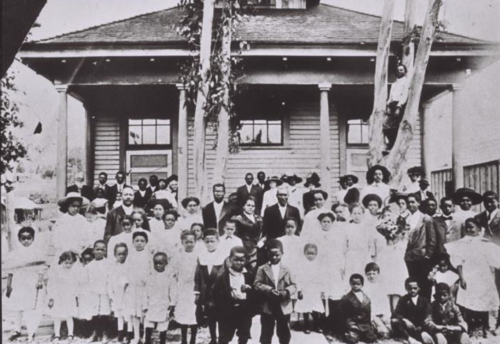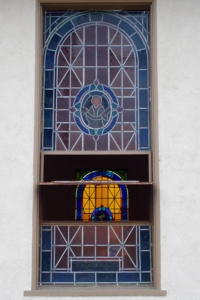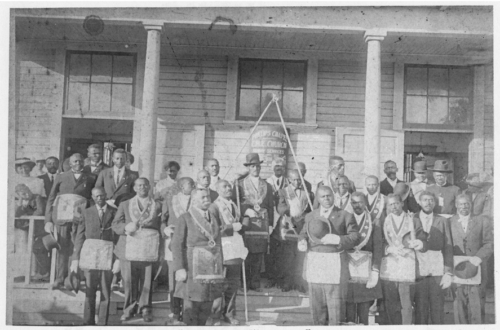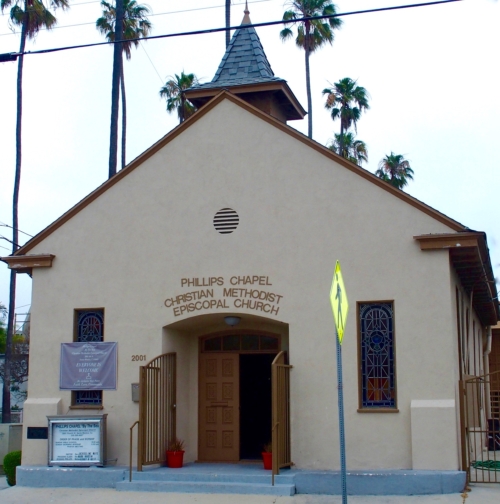Phillips Chapel Christian Methodist Episcopal (CME) Church

- Known As
- Phillips Chapel, Colonial Revival
- Architect
- –
- Built
- 1890
- Designated
- October 10, 2005
The first African Americans settled in Santa Monica in the late 1800s, joining Chinese, Latino, Japanese, old Californios and new Mexicans, Jews and immigrants of other nationalities in building the new city. Most African Americans migrated from southern states, attracted by the climate, employment and escape from Jim Crow laws and practices.
Santa Monica’s early African American community’s social life centered on the family, the church, social groups and the few places that allowed their patronage. Informal discrimination practices meant that African Americans could only swim at municipal pools the day before the facilities were cleaned and only attend movies, concerts or plays at certain theaters, sometimes relegated to segregated seats. They were refused service at many hotels, restaurants and other establishments until protests of this exclusion and legal victories secured and clarified their civil rights.
Discriminatory practices in Santa Monica meant most African American settlers were limited to domestic and service positions such as maids, butlers, janitors, draymen and chauffeurs. Some entrepreneurs ran boarding houses, barber shops, beauty salons and hauling companies that served both black and white patrons. A few ministers led African American congregations, but opportunities did not open in other professions, such as teaching, medicine or law until the 1950s. Restrictive real estate covenants prevented African Americans from buying property in certain areas and limited the schools their children could attend.
In 1905, African Americans established a religious congregation at Hull’s Hall on Third Street in the north section of Santa Monica, which later became Phillips Chapel Christian Methodist Episcopal (CME) Church in the Ocean Park neighborhood. The congregation was led by Western Regional CME Church leader Bishop Charles H. Phillips, with Reverend J.W. Reese from the West Texas Conference sent to assist in the endeavor.
By 1908 the local congregation had purchased a Washington School building, which had been damaged by fire, from the Santa Monica School Board with the help of funds raised by CME congregations across the nation. Originally constructed circa 1890–1895 at Ashland Avenue and 4th Street, the school building was moved to 4th and Bay Streets where it was renovated and reborn as the first African American house of worship in Santa Monica. The structure was likely the second or third school building constructed, and could possibly be the oldest continuously used public building in its remodeled form in our city.
Through varied church records that Phillips Chapel was remodeled in 1910 and the 1940s at its 4th and Bay Street location. Through the remodels and renovations the building has retained its historic Colonial Revival architectural style appearance.
Named for Bishop Charles H. Phillips, this was the first CME church established west of Texas. Reverend James A. Stout (1875–1932) served as the church’s first pastor, and later became the presiding elder of the region. He was involved with the formation of several CME churches on the Pacific Slope. The Stout family made Santa Monica’s Ocean Park neighborhood their permanent home.
 The Daily Outlook newspaper reported that the Cornerstone dedication ceremony held on Sunday, October 31, 1909 for Phillips Chapel was attended by more than 100 people. Family members of the African American clans, such as the Brunsons, the McCarrolls, the Gordons, the Reeses, the Tabors and the Jacksons living in Santa Monica Bay region may have attended the event. In the upcoming decades these families, along with other African Americans from the southern California region and beyond, would enjoy recreational and social opportunities at Bay Street Beach, which was down the hill from Phillips Chapel between Pico Boulevard and Bicknell Street, and sometimes derogatorily called “the Inkwell.”
The Daily Outlook newspaper reported that the Cornerstone dedication ceremony held on Sunday, October 31, 1909 for Phillips Chapel was attended by more than 100 people. Family members of the African American clans, such as the Brunsons, the McCarrolls, the Gordons, the Reeses, the Tabors and the Jacksons living in Santa Monica Bay region may have attended the event. In the upcoming decades these families, along with other African Americans from the southern California region and beyond, would enjoy recreational and social opportunities at Bay Street Beach, which was down the hill from Phillips Chapel between Pico Boulevard and Bicknell Street, and sometimes derogatorily called “the Inkwell.”
Phillips Chapel has eleven stained glass windows commemorating some of the prominent families who attended the church. In 2005, Phillips Chapel was designated as a City of Santa Monica landmark. Phillips Chapel was the spiritual and institutional center of the earliest African American neighborhood clustered around 4th and Bay Streets, and the group’s greater community living in other parts of Santa Monica. Descendants of early settlers continue to reside in the bay city. Santa Monica is the only seaside enclave in the region with a historic African American community from the late 19th century that continues to exist in the 21st century.
See Phillips Chapel CME church, Santa Monica, CA., Dr. Alison Rose Jefferson from African American Registry on Vimeo.
Early Black Churches
The first independent Black churches were formed in New York, Philadelphia and Baltimore. Freemen Richard Allen and Absalom Jones walked out of St. George’s Church in Philadelphia in 1787, because they refused to accept segregation and discrimination. The earliest separatist church movement among African Americans led to the founding of the African Methodist Episcopal Church (AME) in 1816 and of the African Methodist Episcopal Zion Church (AMEZ) in 1821, as well as of many Baptist churches during this time period.
The Christian Methodist Episcopal Church was the first national African American organization established by formerly enslaved citizens in 1870 during the Reconstruction era after the Civil War. The CME grew out of the Methodist Episcopal Church South (MECS), which had separated from the Methodist Episcopal Church (MEC) in 1844 over the issue of slavery. The MEC was originally formed in 1784 in the American Colonies out of the John and Charles Wesley reform movement of the Church of England, also known as Methodism.
From 1844 until the end of the Civil War, enslaved people were a large percentage of the membership of the MECS. The CME Church was formed with the support of MECS. The CME Church today is very similar in belief and practice to the United Methodist Church. Education of the formerly enslaved and their children was a major priority and activity for all Methodists. The CME Church established several schools across the South, including: Lane College (Jackson, Tennessee); Paine College (Augusta, Georgia); Miles College (Birmingham, Alabama); Mississippi Industrial College (Holly Springs, Mississippi) and Texas College (Tyler, Texas).

Phillips Chapel CME, 1914, Crescent Bay Lodge No. 19 members. Arthur Burkes, Founder and First Worshipful Master. Photo: Crescent Bay Lodge Collection, Santa Monica Historical Society Museum.
The themes found in the writings and preaching of the independent Black church movement were justice, liberation, hope, love and suffering. As the first social institutions controlled by African Americans, these new churches were places that could address the social, political, economic and spiritual needs of their communities.
Sources:
Alison Rose Jefferson, historian and author.
City of Santa Monica, “Historic Resources Inventory Sheet for Phillips Chapel,” prepared by Leslie Heumann, 1992.
Foner, Eric. A Short History of Reconstruction, 1867-1877.
Gordon Melton. Encyclopedia of American Religions, 7th ed.
Lakey, Othal Hawthrone. The History of the C.M.E. Church.
Lungsford, James W. Looking at Santa Monica: The Ocean, The Sunset, the Hills and the Clouds.
Lippy, Charles H. and Williams, Peter W., eds. Encyclopedia of the American Religious Experience: Studies of Traditions and Movement.
Christian Methodist Episcopal Church (CME), Brief History.
